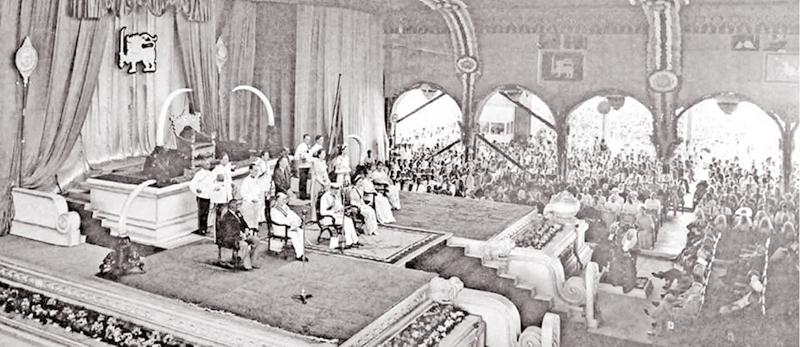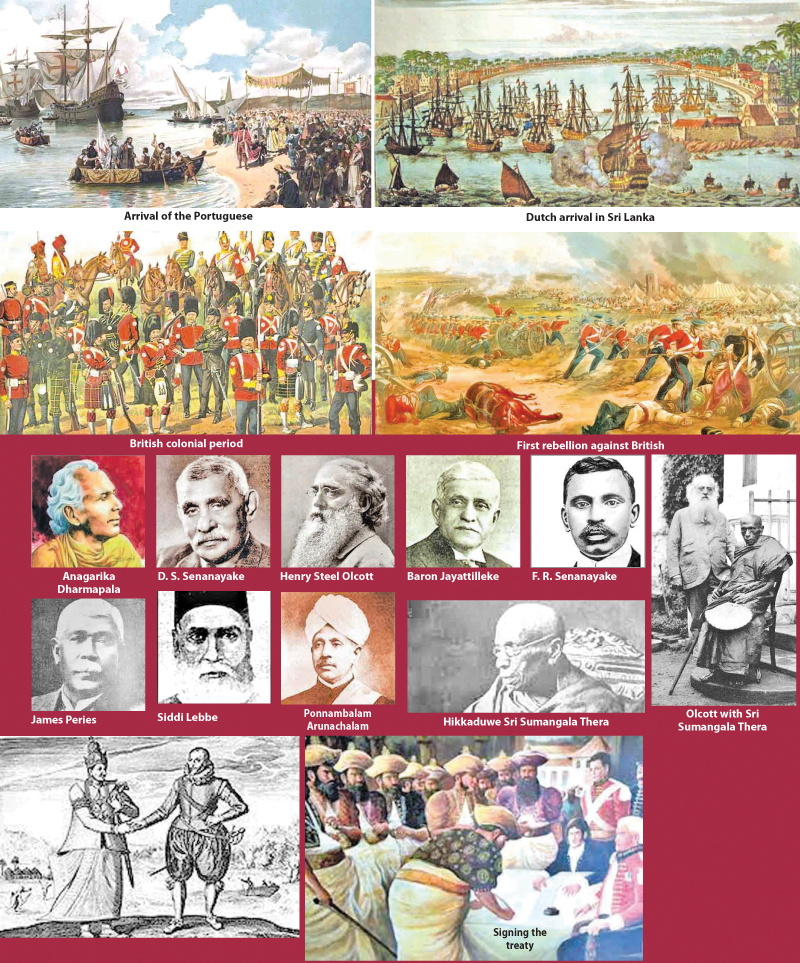
On February 4, 1948, as the first rays of the sun lay on Ceylon, as Sri lanka was then called, the people of this land who had been subject to European rule for nearly four centuries breathed their first breath of freedom.
Arrival of the Portuguese
The first Europeans to conquer our Maitime provinces, the Poruguese arrived in 1505. It was an accidental arrival after being caught in a storm.. It was a dark day in 1505, when Lorenzo de Almeida, a great explorer and a l friend of the ruler of Portugal, accidentally faced a storm and landed in Galle, Ceylon as Sri Lanka was known then.
The presence of the Portuguese on the island lasted from 1505 to 1658. Later, they got drawn into the internal politics of Sri Lanka.
Sri Lanka did not become a colony of Portugal until King Dharmapala of Kotte died. He died without an heir. He granted the Kingdom of Kotte to the Portuguese King in 1580. It permitted the Portuguese to lay claim to the Kingdom of Kotte upon Dharmapala’s death in 1597. The Portuguese rule began with much resistance by the local population. Later, the independent Kings of Kandy kingdom of Kandy sought help from the Dutch East India Company.
Dutch Arrival
In 1602, during the reign of King Wimaladharmasuriya the First, Admiral Van Spilbergen arrived and established a friendship with the king. In 1638, the Dutch signed a treaty with King Rajasinghe II after the second invitation of the King to wage war against their common enemy, the Portuguese.
In 1658, the Dutch took control of the Maritime provinces after defeating the Portuguese.
Even after the Portuguese period ended, elements of the Portuguese culture from this colonial era remain in Sri Lanka. It almost took two decades to defeat the Portuguese.
Between 1659 - 1668 the Dutch attacked the Kingdom of Kandy. , But with the attack of King Rajasinghe II, they retreated.
By 1762, as the disagreements between the Dutch and the King started to increase, The ruler sought help from Britain. When Englishman John Pybus arrived, the Dutch attacked the Kingdom of Kandy but failed. Again in 1766, both the King and the Dutch signed a peace treaty with 25 sentences.
In 1796, the British arrived in Sri Lanka and defeated the Dutch and took control of the maritime provinces of the country.
British Arrival:
In 1803, the British invaded the Kingdom of Kandy in the first Kandyan War but were forced to retreat. In 1815, the Kingdom of Kandy was captured in the Second Kandyan War, which ended Ceylonese independence and Sri Lanka became a colony of the British Empire.
From 1815, the British ruled Ceylon for more than 130 years.The King was deported to Vellore in India and died there.
The first rebellion against the British was in 1818 but it failed. Among the leaders were Keppetipola Nilame, Madugalle Disawa and Kiwlegedara Mohottala and Butawe Rate Rala.
In 1848, a second rebellion against the British took place.with the leadership of Gongalegoda Banda, Veera Puran Appu and Dingirala.
The main reason for this rebellion was the improper taxation by Governor, Viscount Torrington. But this rebellion too failed.
The Independence Movement
The Sri Lankan Independence Movement was a peaceful political movement which was aimed at achieving independence and self-rule for Ceylon from the British Empire.
The negotiations with the British were led by D.S. Senanayake, the first Prime Minister of Ceylon.
He strongly believed in achieving independence through legal and constitutional means.
The Buddhist resurgence of Sri Lanka helped Sri Lanka to achieve independence and played a huge role in the independence struggle.
Several eminent personalities such as Anagarika Dharmapala, Walpola Rahula Thera, Migettuwaththe Gunananda thera, Hikkaduwe Sri Sumangala Thera and foreigners such as Henry Steel Olcott and Madame Blavatsky were in the forefront of the resurgence of Buddhism. All these national heroes played a huge role in the independence movement of Sri Lanka.
The youth of Ceylon were highly involved in the independence movement.
One of the most significant milestones with youth leagues in the independence movements of Ceylon was forming The Lanka Sama Samaja party.
Their efforts were impressive and they strengthened the national heroes to achieve independence.
National heroes such as James Peries, F.R. Senanayake, Ponnambalam Arunachalam, Siddi Lebbe, D.S. Senanayake, Anagarika Dharmapala, Baron Jayattilleke, and many more joined hands with youth leagues and worked to gain independence for Ceylon.
Soulbury Commission
As a result of the huge impact, the British government appointed a Commission, the Soulbury Commission to study and make recommendations of Sri Lanka’s constitutional reforms.
The Commission recommended a Constitution that offers Sri Lankans full power Yet, British authorities declared nothing concerning the freedom of the country.
Political leaders such as D.S. Senanayake argued pointing out the rights Sri Lankans have to freedom. Finally, the British agreed to give Ceylon independence.
The first Parliamentary Election took place in 1947 and D.S. Senanayake established the first Sri Lankan Government, as the result of the independence movement. Then in 1948, on February 4, 1948 Ceylon gained independence.
The Independence Celebrations and the opening of the first Parliament was held with the Duke of Gloucester representing the King of England.

Yashodhara Paranagama
9H
Musaeus College
Colombo 7
